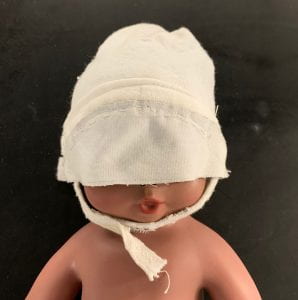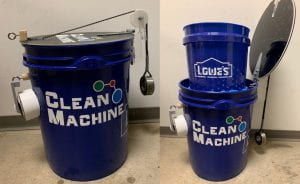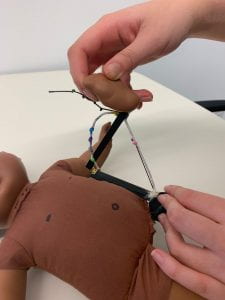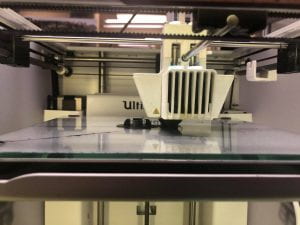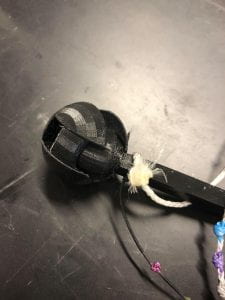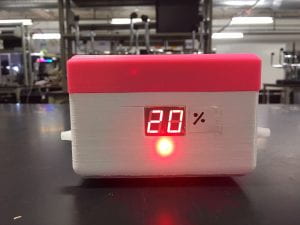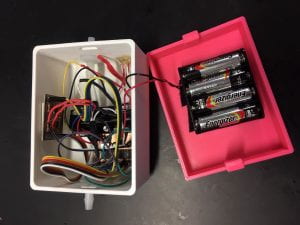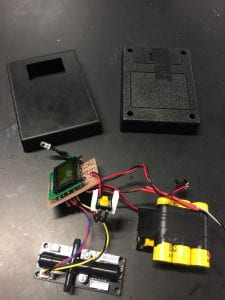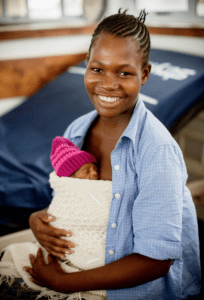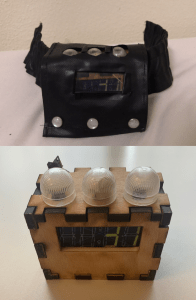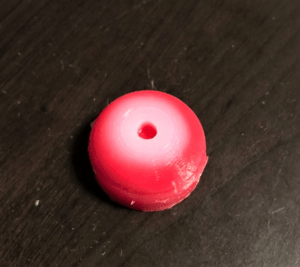Hello all!
Seeing as this is my first blog post, I would like to begin with a brief introduction. I have just graduated from Rice this past weekend with a degree in Psychology and a Global Health Technologies Minor. I am looking forward to this internship in Malawi, because it will allow me to further explore my passion for Global Public Health. I plan to make the most of this opportunity and look forward to updating everyone about my experiences through here.
The internship has 4 components. The first is taking a Rice 360 technology to receive feedback on it. I am excited that I will be taking my team, Colostomates, Low-cost ostomy bag. We have been working on this project for the past 2.5 years and I have hope that it will continue to be worked on even though the majority of us have graduated. I believe our device is a simple solution to a complex problem. A colostomy bag is needed when people undergo an intestinal surgery due to Chrohn’s disease, colorectal cancer or other complications. The surgeon redirects their intestine to an opening in their abdomen, which is then referred to as a stoma. The colostomy bag then is used to collect the waste that comes out of the stoma. In high resource settings bags cost $8/bag and people change them 2-3 times a day. However, in low resource settings, people resort to using unconventional, unhygienic alternatives due to lack of accessibility to ostomy bags. Some people even forego these life-saving surgeries due to the social stigma associated with the condition.
Therefore, the feedback received this summer will be used to improve our design and be one step closer to creating a product that could be manufactured and used by people worldwide. The feedback I will be receiving will be from nurses, doctors and other health professionals and solely be qualitative and used to improve our design. I will not be asking patients nor have anyone try on the bag, since we do not have an IRB approved study. We have applied to a modification of our previous study and are in the process of eventually being allowed to test it on voluntary ostomates (people with ostomies).
The second part is working on an assigned project by the host. For Kyla (another Rice intern) and I, this is a little different because our “boss” for this project is Dr. Acemyan, the Director of Human Factors for Rice 360, who will be here in Houston during the summer. We met with her in the past two weeks to get a better understanding what usability and ergonomics entails and to discuss what the goal of our time in Malawi will be. Our task is two-fold. We will have to first document the use environment. This involves literal environment parameters, such as temperature, space, and set-up of the NICU and other hospital rooms. However it also involves, politely observing how users interact with the devices. The users range from the baby’s mothers to the device technicians. We will noting what each person uses the devices for and how they learned to use it. Through our meetings with Dr. Acemyan and our readings, we learned that what the users report and what actually occurs may be at a disconnect. In controlled settings, users may accomodate to what they believe the experimenter expects and may hold back on their answers. This is why this observation period is crucial. Next, we will ask nurses about Incubaby (another Rice360 technology that it is at a much more advanced stage) through a set of outlined survey questions, which we are currently working to finalize. This is not meant to be a formal interview but rather the questions will serve as a guideline to a conversation where the nurses will hopefully tell us what they really think about the device and which areas can be improved. This information will then be brought back to Rice to improve the device to better fit the needs. This is one of my favorite parts of the internship, because one of my career interests is human-centered design so this project combines both my passion for Global Health and this. I believe it is important to gain the nurses trust and be a silent observer for some time, before delving into asking them specific questions. This is a balance that may be tricky and with the help of my partner, Kyla we can work through together. Since our time in Malawi will be relatively short, we need to be sure we get the information we need, through a rough timeline but we also need to be aware of our own cultural competency and be sure not to rush or seems to abrasive. One of the difficulties may be communicating with Dr. Acemyan, since she will not be in-country, but we plan to communicate with her through email and will be handing her a detailed report at the end of the summer that documents our findings. These findings along with the survey questions we are developing are the beginning of protocol that Rice360 could incorporate to evaluate other technologies when they are still in the development stage, rather than waiting until the implementation stage.
The third and fourth part I will be planning and discovering as I am abroad. To begin with I will need to find 2-5 areas where a design project would be beneficial. I will write a separate report on each of my findings and will bring them back to Rice so that they can be considered as team projects in different Global Health classes. Since I will spend most of the workday in Queen Elizabeth hospital, I plan to observe and begin to build a rapport with the nurses. This will help me with both documenting the use environment as well as finding potentials for design projects. The last part of the internship involves finding and implementing my own project. I want to go in with no assumptions and get a better understanding of how the hospital functions and see how their culture specifically differs from ours before making a decision on a project. One of the things I do know, is that I want to include the nurses or other hospital staff at some capacity. I know they are very busy, but I would like it to be a collaborative effort, maybe with the other Malawi or Tanzania interns because there is value in different perspectives and I want to make sure I am not imposing my beliefs or opinions on them.
Overall, I am excited with a tinge of nervousness. I know there is going to be an adjustment period and plenty to do work wise as part of the internship, but I do also want to enjoy my time there and get to know the other Rice interns going with me as well as the people we will meet in Malawi. For now, my focus will be working with Kyla and Dr. Acemyan on the usability survey questions and packing for the trip!
-Liseth Mariana

